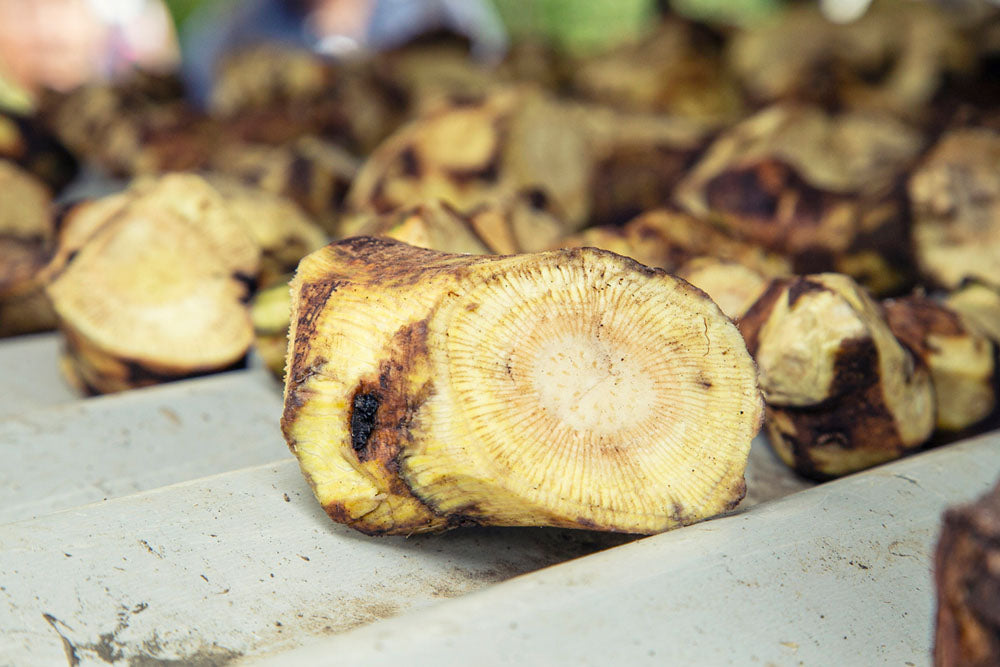
If you’ve tried buying kava online over the last year, you may have noticed that kava supplies are painfully low. At Bula Kava House, we’ve had to search the world over to find our customers the type of quality kava they’ve come to expect from our online store and at our Portland kava bar. To find kava that meets our high standards for quality, we’ve looked to the Solomon Islands, Tonga, and a few other lesser-known kava growing regions to find some truly hidden gems that have both delighted and surprised our customers with their flavor and complexity.
The reason kava is currently so scarce is simply a case where supply cannot keep up with demand. Kava has seen an explosion in popularity over the last five to 10 years, and kava growers have exhausted their cache of kava that’s mature and ready for harvest. Unlike grapes used to make wine or hops needed for certain types of beer, kava takes far longer to grow and harvest, causing a disruption in supply that will take years to correct.
Growing kava successfully is incredibly difficult and requires a deep understanding of the plant and its underlying principles. Let’s dig a little deeper into what it takes to grow kava so you can have a better appreciation of how it can be challenging to buy kava online.
Propagating the Kava Plant
Kava cultivation requires a lot of work and effort to successfully care for a plant until it matures enough to harvest. Perhaps the trickiest part of maintaining a continuous crop of kava plants is that kava is sterile. The plant will not reproduce naturally, and the female flowers rarely develop and don’t produce any type of seed or fruit.
Farmers must cultivate each plant from a small section of stalk they remove from a mature plant and transplant into the ground to propagate kava. Farmers will remove between 3 to 4 inches of an existing stem, plant that into fresh soil, and then spend the next 3 to 5 years tending to the plant until it fully matures.
In remote farming villages in Vanuatu, Tonga, and other South Pacific nations where kava is routinely grown, this process of cultivation and planting is typically done by hand, without the aid of modern farming equipment. Growing kava is a laborious and time-consuming process, which explains why the world is currently experiencing a kava shortage.
Early Planting Process
For the kava clipping to take root, farmers plant the stalk in loose soil, allowing plenty of space for the roots to take hold, extend, and gather nutrients. Usually, kava clippings are planted in shaded areas to help protect the still developing roots from the hot South Pacific sun. Fortunately, the tropical climate provides plenty of rainfall, which helps regulate the plants’ temperatures and keeps the soil damp.
Considering kava's fragile and temperamental nature, adverse weather conditions can cause the clipping to fail. In addition to drought, tropical storms that cause excessive rainfall, flooding, and landslides can also destroy a kava crop well before it reaches maturity.
As one of the only cash crops in Vanuatu, the loss of a kava crop can be financially devastating to both farmers and their communities. Depending on the size, many smaller villages will grow and sell their kava crops collectively to buyers who travel the countryside during harvest. Without the proceeds from a successful kava crop, a village can face financial ruin or hardship. To mitigate the potential for this type of disaster to occur, kava nurseries have started popping up throughout the South Pacific. Farmers can use these nurseries to grow seedlings in a protected environment. Once a seedling has taken root, a farmer can then take the seedling back to their villages to plant a kava crop.
Harvesting Kava
What complicates kava production the most is that a plant needs between 3 to 5 years to reach full maturity. When adequately matured, plants will fully develop the kavalactones that give kava its heady kick. Harvested at too young an age, the plant will provide only a mild potency that may not make much of an impact to aficionados who’ve grown accustomed to enjoying more potent effects.
At the point of harvest, a fully mature kava plant will stand around 6 feet in height. The root of a kava plant can grow up to 2 feet below the soil's surface. During harvest, farmers will take special care to collect all of a plant’s lateral roots, which possess the majority of the kavalactones.
Pulling a plant up and harvesting its roots doesn’t allow replanting or harvesting a second time. To harvest a plant, farmers must rip the kava from the ground, killing the plant in the process. As a result, there are no generational kava plants. Unlike grape vines that can stretch back decades or other types of fruit plants that endure harvest after harvest, a kava plant doesn’t survive long past its maturation date.
